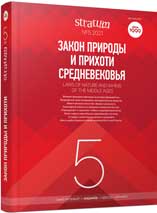Культурно-географические условия развития военного дела Руси X — первой половины XIII вв. в свете концепции симметрического и асимметрического ответов
The Cultural and Geographical Patterns of Rus’ Military Affair Development from the Tenth to the First Half of the Thirteenth Centuries in the Light of the Symmetrical and Asymmetrical Responses Concept
Author(s): Viacheslav D. GrekovSubject(s): History, Historical Geography, Middle Ages, 6th to 12th Centuries
Published by: Издательский дом Stratum, Университет «Высшая антропологическая школа»
Keywords: Rus; 10th—13th centuries; cultural and geographical patterns; military affairs; sedentary; nomadic;frontier;
Summary/Abstract: The article considers the main cultural and geographical patterns which affected the development of military affairs in Rus. The state of Rus had the frontier cultural and geographical location. This fact determined the special way of the development of military affairs. The consideration of differences between sedentary and nomadic concepts of military affairs from the tenth to the first half of thirteenth century receives an important place in the article. The concept of symmetric and asymmetric responses is suggested for identifying regularity of military affairs development. The given concept is based on the ideas from Arnold J. Toynbee’s civilization theory.Three main directions of cultural influence/interinfluence were identified and their features and role in the development of military affairs of Rus were highlighted in the research. This development was simultaneously imposed to two opposite challenges — nomadic and sedentary ones that led to a combination of opposite responses and formation of an intermediate way in which main features of both concepts could be found.
Journal: Stratum plus. Археология и культурная антропология
- Issue Year: 2021
- Issue No: 5
- Page Range: 41-46
- Page Count: 6
- Language: Russian
- Content File-PDF

